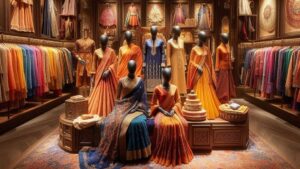
Over the last few years, I’ve seen a quiet but clear shift in how fashion commerce is evolving in Bharat. And I use the word ‘Bharat’ intentionally—it’s not just a geographic label anymore, it reflects a fundamentally different kind of consumer. These aren’t just new markets; they’re new mindsets. And if there’s one thing I’ve realised, it’s that brands now need to speak more than just English—they need to speak the consumer’s language, both literally and culturally.
A lot of fashion marketing—especially the type built for metro audience— simply don’t land in Tier-2 and Tier-3 cities. The over-stylized shoots, English only captions and ‘city vibe’ campaigns don’t build trust. I remember reviewing a campaign where everything looked perfect on paper—great visuals, right products—but it just didn’t connect beyond urban metros. And when we compared it to simpler, more relatable content—shot in regional dialects, featuring real people—the engagement difference was huge. It’s not that the audience isn’t aspirational. They are. But the aspiration is now more grounded and more personal. They want to see people like them, in scenarios they understand, speaking in a tone that’s familiar—not marketing-speak.
Why Local-Language Video is Winning: One of the biggest enablers of this shift has been the explosion of short-form, local-language video. What we’re seeing is that people trust what they understand—and that starts with language. A 30-second video explaining how to style a kurta for a small-town college fest, spoken in Bundeli or Marathi, will always feel more relevant than a glossy, silent montage.
Some brands I’ve been following closely have started experimenting with video formats that are raw and more native to the local audience. Try-ons, budget hauls, even basic ‘how to wear’ content— especially when done by store associates or local creators—are driving serious interest. It’s not always about production value. In fact, when content is too polished, it often feels out of touch. We’re also moving from celebrity endorsement to community recommendation. Instead of relying on pan-India influencers, some brands are now working with nano-influencers—someone with maybe 8,000 followers, but all in the same town or state. These aren’t just content creators; they’re community insiders. The trust they hold is real.
Other Trends
1. 2025 Trends: Silver Generation Set To Rule Fashion
2. Product discovery and customer service to power growth
3. 2025 Trends: Ethnicwear Set To Shine,
4. 2025 Trends: Bharat Retail To Go Compact, Lean: Anant Tanted, Founder and CEO, The Indian Garage Co.
5. 2025 Trends: Q-Commerce To Fuel Fashion In Small Cities
6. 2025 Trends: Buy Now, Pay Later To Ignite Shopping Boom
7. 2025 Trends: Athleisure To Go Full Throttle
| “Instead of relying on pan-India influencers, some brands are now working with nano-influencers—someone with maybe 8,000 followers, but all in the same town or state. These aren’t just content creators; they’re community insiders. The trust they hold is real.” |
Scaling It Without Losing Soul: One of the consistent challenges that comes up in leadership conversations is: “How do we do this at scale?” And honestly, there’s no easy answer. Centralised content creation rarely works for Bharat audiences. But completely decentralised approaches risk brand dilution. I think the middle path lies in enabling regional content pods—equipping local teams with creative templates, access to lightweight editing tools, maybe even a basic content guideline—but letting the storytelling feel local.’
Platforms Go Where the Audience Is: If there’s one mistake, I’ve seen brands make, it’s assuming the same content works everywhere. But the platform landscape in Bharat is completely different from metros.
In Tier-2 and Tier-3 regions, Share Chat, Moj and YouTube Shorts are often more impactful than Instagram or Facebook. I’ve had conversations where CMOs are shocked to find that 80% of their brand mentions are happening on platforms they weren’t even tracking. The discovery model is different—it’s not hashtags and influencers, it’s language filters and community shares. Yes, AI and automation tools are making it easier to scale vernacular content—especially dubbing, editing and basic production. I’ve seen use cases where a brand uses voice cloning to launch product videos in six languages within days. That’s great. But even then, someone needs to validate the tone, the phrasing, the cultural nuances.
Brands that are doing this well are no longer obsessed with just clicks or views. They’re tracking engagement in local community groups, save rates, repeat views and even things like WhatsApp shares. One interesting approach I’ve seen recently is a brand tracking ‘authenticity score’ based on sentiment analysis of comments on regional videos. Not perfect, but a move in the right direction.






